Champagne 101
With season of love well and truly upon us, many people will have made the switch from a bottle of red to an ice-cold bottle of sparkling wine to help kickstart parties and barbecues. Here is your guide to choosing, chilling, opening, serving and storing sparkling wine.
What’s the difference?
To be called champagne a sparkling wine must come from the Champagne region of northern France and be made using the “methode champenoise“, in which secondary fermentation occurs in the bottle.
Sparkling wine made using the same process will have “methode traditionelle“, “bottle fermented” or “methode champenoise” on the label.
Many other sparkling wines are almost always produced using the methode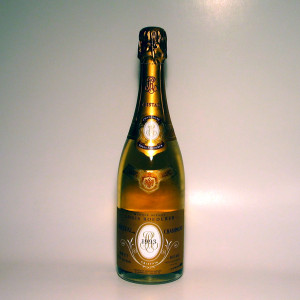 Charmat which differs from the classic method as the fermentation takes place in an autoclave, a large pressurised container, instead of in the bottle.
Charmat which differs from the classic method as the fermentation takes place in an autoclave, a large pressurised container, instead of in the bottle.
The result of using the methode champenoise, both for semi-sparkling and sparkling wines, is a product where the effervescence (the carbon anhydride contained in the liquid) comes from endogenous fermentation.
Choosing a champagne or sparkling wine
Methode traditionelle: It brings with it complexity and affects the way it feels in your mouth. It’s creamier.
Vintage versus non-vintage
Vintage champagne and vintage sparkling wine come from a single, excellent year and have been matured for at least three years. Because a vintage is not declared every year, it is generally more expensive.
A late disgorged wine (look for “LD” on the label or “RD” if it’s French champagne) will have extended time on the lees and exhibit still more depth of flavour.
But don’t discount non-vintage drops made from multiple vintages. More than 80% of champagne is non-vintage and it can be excellent quality. Many champagne houses live and die by their non-vintage. For consistency of style and brand, non-vintage is a great starting point.
Dry versus sweet
Check the label to disco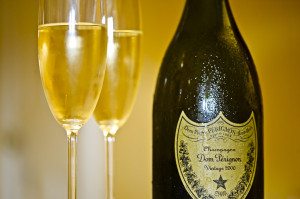 ver a sparkling wine’s level of sweetness. It ranges from doux (sweet), demi-sec (half-dry), sec (dry) and extra sec (extra dry) to brut (dry-dry),extra brut or brut naturel (the driest).
ver a sparkling wine’s level of sweetness. It ranges from doux (sweet), demi-sec (half-dry), sec (dry) and extra sec (extra dry) to brut (dry-dry),extra brut or brut naturel (the driest).
Colour and grapes
Champagne is usually made from a blend (or cuvée) of Chardonnay grapes and red grapes: Pinot Noir and/or Pinot Meunier grapes. Rarer is Blanc de Blanc made only from Chardonnay grapes, an ideal aperitif due to its citrus and mineral characters and Blanc de Noir, which uses only red grapes and tends to show bolder flavours, such as cherry, strawberries and spice.
Rosé is often made using less than 10% of red wine. These pink sparklings show lighter red fruits and on-the-cusp-of-ripeness strawberries.
Champagne houses often fix themselves to a particular style so it’s worth asking your independent local wine shop what each specialises in. For example, the Pol Roger style is fresh and lively and a good aperitif whereas Bollinger tends to have a richer, biscuity style with great depth of flavour.
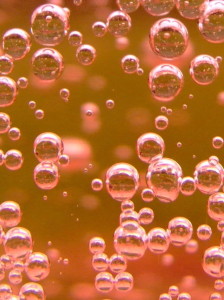 Chilling
Chilling
Comité Champagne, the French trade organisation for those in the champagne industry, says the correct way to chill a bottle is using a champagne bucket. A champagne bottle from the cellar plunged into a bucket filled with water and ice should reach the right temperature in 15 to 20 minutes.
Alternatively, lie the bottle down on the bottom shelf of your fridge for three or four hours before serving. You can leave it there even longer provided the temperature remains constant.
Don’t try to speed-chill champagne in the freezer or you’ll ruin its aromas and flavours.
Opening the bottle
Champagne corks can travel at up to 100km/h so it’s worth being careful when you open a bottle. Here is our in-house guide to injury-free bottle opening (and here our infographic to give you some visual guidelines!).
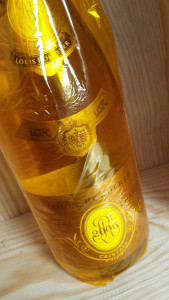 Using your waiter’s friend, cut the foil at the bottom of the cage. Do not open using the tab as it often tears unevenly.
Using your waiter’s friend, cut the foil at the bottom of the cage. Do not open using the tab as it often tears unevenly.- Remove the foil from the bottle and place a cloth over the cage with your thumb over the cork.
- Untwist the wire cage and loosen, keeping the thumb over the cork and cage at all times.
- Firm up your grip on the bottom of the bottle (for leverage) and hold at a 45-degree angle. With your other hand gently twist the cork and the bottle in the opposite direction.
- Release the cork silently, keeping the bottle at 45 degrees while the pressure dissipates and the cork eases.
- Pour champagne in a single stream in the centre of the glass (two pours if necessary).
If all this silent bottle opening sounds a bit killjoy, there is a reason for it. We don’t let it pop because it disturbs the wine and a lot of the bubbles will dissipate. The most important thing to remember is to hold it away from your guests!
Serving
Decent glassware is the key. An old-fashioned bowl loses bubbles quickly and you can’t catch the aromatics in the same way. A flute delivers the wine onto your tongue and has as an impact on your enjoyment.
We serve champagne straight and abhors champagne cocktails: it’s a travesty. It’s disrespectful to the maker. We’re not a fan.
If you are making a champagne cocktail, you can use a good sparkling wine, rather than champagne, especially if there is brandy or sugar obscuring the flavour.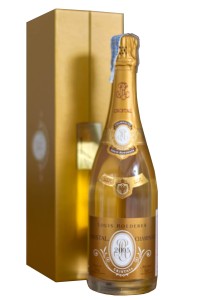
Adding elements such as strawberries or hibiscus will not enhance the drink’s personality but neither will it negatively affect it.
With food
Champagne is traditionally sipped as an aperitif, but it is fantastic with food too. Entire dinners served in the Champagne region accompanied solely by different champagnes.
Blanc de blanc goes well with shellfish, while a Pinot Noir-dominated sparkling or a Blanc de Noir partner excellently with pate and game birds.
Storage
Non-vintage champagne or sparkling wine is not designed for storage for any length of time because the producer has already done the maturing for you, but you can store vintage champagne for a long time. Bottles should be stored on their sides in a cool, dark place with little variation in temperature.
If you are storing an opened bottle in the fridge – for no more than 24 hours – invest in a proper champagne stopper. A spoon in the neck of the bottle does not work.



 0
0